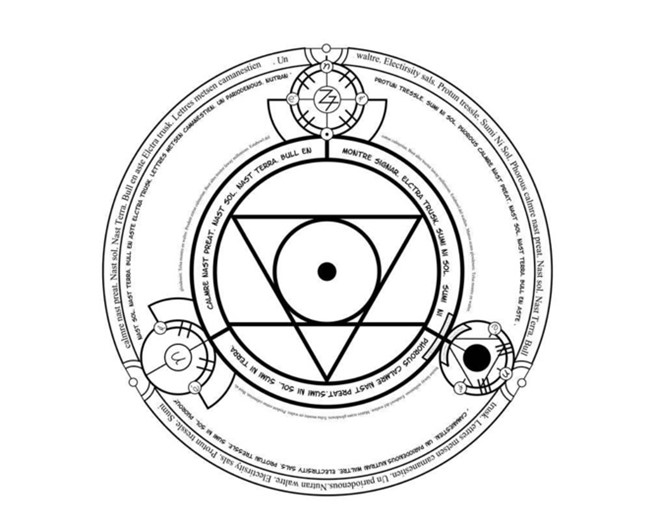The Transformative Power of Psychodrama: An Alchemical Journey of Self-Discovery and Healing
“And when you are near I will tear your eyes out
and place them instead of mine,
and you will tear my eyes out
and will place them instead of yours,
then I will look at me with mine.”
― Jacob Levy Moreno
What if time travel were more than a fantastical concept? Picture this: you have the ability to transform outcomes by meeting your past or future self. It’s a thought that tickles the imagination and probes the depths of our desires and regrets. This isn’t about altering history, but rather engaging in a dialogue with the various selves that reside within us – our younger, more naive self, our older, perhaps wiser self. It’s a journey of understanding the impact of our past and the potential of our future.
Now, let’s take this a step further. Imagine conversing with loved ones who have passed away, addressing unresolved issues, and seeking closure. This transcends the physical barriers of life and death, offering a unique space for emotional reconciliation. It’s about re-establishing connections that were lost, in a realm where time and space lose their conventional meaning.
Psychodrama allows us to delve into this realm. It’s not just about exploring emotions; it’s about embodying them. What if you could personify your anger, sadness, or joy? These emotions are not mere states of being; they are entities with their own narratives and existences within us. What stories would they tell? What secrets would they reveal about their existence in the tapestry of our emotional lives?
Perhaps the most intriguing aspect of psychodrama is the opportunity to step into someone else’s shoes. This goes beyond empathy. It’s about experiencing their emotions, understanding their thoughts, and viewing the world from an entirely different perspective. This transformation can be enlightening and disorienting, offering a profound shift in how we perceive ourselves and others.
In psychodrama sessions, often referred to as “The Living Stage,” these possibilities come to life. Here, the drama of our internal world is not just enacted; it’s felt and lived. It’s a space where the scripts of our lives can be examined and rewritten, where the characters within us find their voices. Guided by a skilled therapist, the psychodrama stage becomes a container for exploration, discovery, and personal growth.
Through this journey, we’re reminded of the power and complexity of our emotional lives. While literal time travel remains a dream, navigating the intricate timelines of our emotions is a profound reality. It’s an exploration that offers understanding, healing, and a deeper connection with the selves that reside within us and the people who shape our lives.
Imagine stepping onto a stage where your deepest emotions and untold stories come to life. This is the essence of psychodrama, a revolutionary therapy developed by Jacob Moreno. Far from the confines of traditional talk therapy, psychodrama invites you on an exhilarating journey deep into the human psyche. Here, on « The Living Stage, » your innermost fears, desires, and truths are not just spoken about; they are vividly enacted, offering a dynamic and interactive path to healing. This isn’t just therapy; it’s an adventure into the self. As you, the protagonist of your own story, navigate through your emotional narratives, conflicts, and dreams, psychodrama offers a profound exploration that goes beyond mere role-playing. It’s a deep dive into the layers of your psyche, uncovering insights and healing paths often hidden in conventional therapy. In the world of psychodrama, every emotion is a character, every conflict a scene, and every realization a step towards transformative self-discovery and lasting change.
The Enigmatic World of Psychodrama: A Therapist’s Perspective
Capturing the essence of a psychodrama session is akin to trying to encapsulate the vividness of a dream. It’s an experience that’s both complex and deeply personal, unfolding on a stage that blurs the lines between reality and theatre. In this unique space, the transformative magic of psychodrama comes to life, offering a glimpse into the depths of human emotion and experience.
At the centre of this stage is the protagonist, a member of the group who steps forward, ready to embark on an emotional odyssey. Guided by the director – the therapist at the helm – this journey is carefully orchestrated to ensure safety and depth. The director’s role is pivotal, navigating the protagonist through the ebbs and flows of their emotional narrative.
The supporting cast, known as auxiliaries, are crucial to this process. They step into the shoes of significant others, aspects of the protagonist’s psyche, or symbolic figures, breathing life into the protagonist’s inner world. Their role is to embody these characters, giving form and voice to the protagonist’s unspoken emotions and untold stories.
Then there’s the audience, the rest of the group, who bear witness to the unfolding drama. Their presence adds a layer of communal experience, offering support and reflection. Sometimes, they too become part of the narrative, adding their perspectives, and enriching the protagonist’s journey.
As a psychodrama therapist, having been both the director and at times a protagonist, I’ve witnessed first-hand the profound impact of this method. From these vantage points, the incredible power of psychodrama to facilitate deep emotional shifts becomes evident. It’s a process that is as enlightening as it is therapeutic.
The Intricacies of a Psychodrama Session: A Journey of Emotional Exploration
Delving into a psychodrama session is like stepping into a world where the complexities of the human experience are theatrically unravelled. The process is intricate, transformative, and deeply personal. At the heart of this unique therapeutic experience is the stage – a space where emotions, conflicts, and narratives come to life.
A psychodrama session unfolds in three distinct phases: warm-up, action, and sharing. The warm-up phase is crucial. It’s a time for the group to come together, acknowledging and honouring the diversity of experiences within the room. Through improvisation games and activities, participants are encouraged to let go of their inhibitions, fostering creativity, spontaneity, and group cohesion. This phase sets the stage, both literally and metaphorically, preparing everyone for the emotional journey ahead.
In the action stage, the protagonist’s story takes centre stage. Selected by the group, the protagonist chooses a specific story or issue from their life to explore. This is where the heart of psychodrama beats the loudest. The protagonist, with the director’s guidance, decides who will play which character in their narrative. As the drama unfolds, the protagonist and the auxiliaries enact scenes, bringing to life the emotional landscape of the protagonist’s experience.
The final phase, sharing, is where the threads of individual experience are woven back into the fabric of the group. After the psychodramatic enactment, there’s an opportunity for all group members to share their personal reflections on the drama. This is a powerful moment, as it helps the protagonist to reintegrate into the group, offering them different perspectives and insights into their story. It’s a time for collective understanding and empathy, where the shared experience of the drama becomes a tool for personal and group healing.
Psychodrama: An Alchemical Journey of Transformation
In the diverse world of therapy, psychodrama emerges as a uniquely transformative practice, echoing the mystical process of alchemy. This therapeutic journey, much like the ancient art of turning lead into gold, unfolds through three symbolic stages, each representing a crucial phase of personal transformation.

- Nigredo (Blackening): This initial stage is where the participants confront their shadow selves. It’s a phase of deep self-exploration, akin to the alchemist’s task of purifying lead. Here, individuals delve into the depths of their psyche, unearthing hidden fears, repressed emotions, and unresolved conflicts. It’s a process of breaking down, of confronting the darker aspects of the self, much like the alchemical dissolution of base materials.
- Albedo (Whitening): Emerging from the turmoil of Nigredo, Albedo symbolizes a phase of purification and gaining clarity. In this stage, the protagonist begins to understand and separate their emotions, reflecting the alchemical process of purifying the metal. It’s a time of insight and revelation, where the chaos of the psyche begins to settle, and clarity emerges from the depths of confusion. This stage represents a cleansing of the soul, a preparation for the transformative work that follows.
- Rubedo (Reddening): The final stage, Rubedo, represents the culmination of the transformative journey. Here, the protagonist reconciles the disparate parts of themselves, moving towards a state of authenticity and wholeness. This stage is akin to the alchemical achievement of turning base metal into gold. It symbolizes the realization of the self’s true potential, the emergence of a renewed individual who has integrated their experiences and emerged stronger and more enlightened.
This process in psychodrama is more than a therapeutic technique; it’s a symbolic journey from impurity to purity, from base material to noble material. It mirrors the spiritual journey of human transformation, moving from ignorance to enlightenment. In psychodrama, participants don’t just work through their issues; they undergo a profound metamorphosis, echoing the alchemist’s quest for transformation and enlightenment. This journey, steeped in symbolism and deep psychological work, offers a path to healing that is as profound as it is transformative.
Nathan’s Journey: A Metaphorical Odyssey in Psychodrama
In a particularly captivating psychodrama session, we witnessed the transformative journey of Nathan, a participant wrestling with self-appreciation. His struggle was poignantly encapsulated in a metaphor he shared: « I feel like a bucket constantly being filled with water, but there’s a hole, and the water always disappears. » This vivid imagery set the stage for an in-depth exploration of his inner world, a journey that would prove to be both revealing and healing.
To bring this metaphor to life, Nathan ingeniously used the resources of the group. He chose four members to form a human ‘bucket,’ representing his self, while a tissue box became the ‘hole’ – the source of his emotional leakage. The scene was animated further when another participant, playing Nathan, attempted to fill this ‘bucket’ with foam balls, symbolizing water. This act of filling and the subsequent loss of the ‘water’ through the ‘hole’ powerfully embodied Nathan’s feelings of loss and emptiness.

In a twist that was both surreal and insightful, Nathan then stepped into the role of the ‘hole.’ This role reversal was a pivotal moment in the session. As the ‘hole,’ Nathan uncovered a deeper truth: it symbolized the lies in his life. These lies, initially a defence mechanism, had morphed into a destructive force. This realization was a profound moment, highlighting Nathan’s struggle with a dysfunctional inner container, one that could not retain his sense of self or his emotions.
The session reached its climax when Nathan engaged in a dialogue with his own lies. This confrontation with the fabric of his constructed reality was not just an exercise; it was a bridge to his inner world. It marked a crucial step in his transformative journey, a moment of both confrontation and revelation.
Linking Nathan’s experience to the alchemical stages of psychodrama, we see a clear parallel. His initial confrontation with the ‘hole’ aligns with the ‘nigredo’ phase, where he faced the darker aspects of his psyche – his shadow self. The subsequent realization and the emotional release he experienced resonate with the ‘albedo’ stage, symbolizing a phase of purification and gaining clarity. Finally, Nathan’s dialogue with his lies, leading to a deeper understanding and acceptance of himself, mirrors the ‘rubedo’ phase. This final stage represents the achievement of wholeness and enlightenment.

Nathan’s journey through this metaphorical enactment in psychodrama is a powerful testament to the method’s efficacy. It illustrates how psychodrama can guide individuals from a state of emotional turmoil to a place of balance, understanding, and wholeness. His story is a vivid example of how psychodrama uses creative expression to facilitate deep emotional healing and personal transformation.
Conclusion: The Transformative Power of Psychodrama
Psychodrama stands as a transformative force in therapy, offering a rich journey into self-discovery. Through enacting metaphors, role reversals, and confronting inner conflicts, it guides participants through profound personal transformation. This method goes beyond traditional talk therapy, tapping into the subconscious to unlock and heal the deepest parts of the psyche. Ideal for those tackling personal challenges or seeking deeper self-understanding, psychodrama provides a dynamic path to genuine healing and growth. In essence, it’s not just therapy, but a journey towards embracing one’s true self, leading to greater fulfilment and emotional well-being.
Want to participate in a psychodrama journey? You can reach me through this link:https://linktr.ee/valeriereichmann











